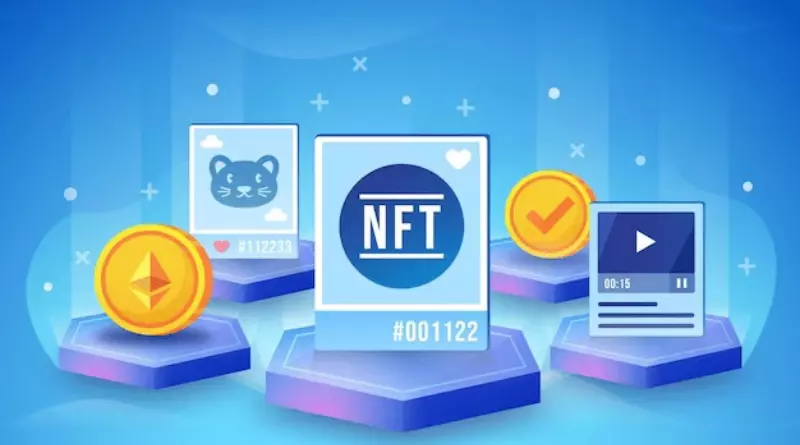DeFi Staking: Join the Revolution in 2023

In the ever-evolving landscape of cryptocurrency and blockchain technology, 2023 brings exciting prospects for those seeking to enhance their financial portfolios. One of the most prominent developments in recent years is the rise of DeFi staking, facilitated by leading DeFi staking platform development services.
This transformative concept has gained momentum, providing cryptocurrency enthusiasts with a sustainable and profitable way to engage with blockchain networks. In this blog, we’ll delve into the world of DeFi staking, explore the proof-of-stake (PoS) consensus mechanism, the various types of staking, and most importantly, why you should consider getting involved in 2023.
Proof-of-Stake: A Sustainable Alternative
The concept of PoS emerged in 2012 as an answer to the energy-intensive mining operations associated with cryptocurrencies like Bitcoin. PoS offers a more energy-efficient and sustainable consensus mechanism by selecting validators based on their stake in the network. Validators deposit a predetermined amount of cryptocurrency, known as their “stake,” into a smart contract on the blockchain. This stake determines their probability of being chosen to validate transactions and earn rewards.
The appeal of PoS lies in its ability to maintain network security while drastically reducing energy consumption compared to proof-of-work (PoW). PoS also offers a lower entry barrier for new participants, fostering decentralization. PoS has the potential to resolve the blockchain trilemma—balancing security, decentralization, and scalability—making it an attractive choice for blockchain ecosystems.
The Rise of DeFi Staking
The introduction of PoS paved the way for various blockchains to implement this consensus mechanism. Cryptocurrencies like Solana, Cardano, Polygon, and even Ethereum have embraced PoS to improve scalability and energy efficiency. As PoS gained prominence, staking emerged as a popular method for generating passive income.
Staking involves validators depositing tokens to the network and locking them to participate in block generation. Depending on the network, validators may require substantial amounts of tokens to become part of the validation set. The staking process can be categorized into several types:
Validator Staking
Validators run nodes and are rewarded based on their stake without sharing profits with delegators.
Delegated Staking
Users delegate their tokens to validators, increasing their total stake and earning a portion of rewards.
Hot & Cold Staking
Hot staking involves staking tokens while they are accessible online, while cold staking ensures security by staking tokens offline.
Locked Staking
Users lock their assets for a specific period to receive additional rewards, increasing network security.
Liquid Staking
A solution to locked staking, it allows assets to remain transferable while generating rewards in DeFi protocols.
Liquidity Staking
Users provide liquidity to decentralized protocols, earning rewards in the form of new coins or trading fees.
Yield Farming
Users earn rewards in different tokens by lending or staking cryptocurrency, often moving tokens between protocols to maximize returns.
The Benefits of DeFi Staking
Participating in DeFi staking offers a multitude of advantages, making it a compelling choice for investors and network participants alike:
Passive Income
Stakers earn yields, ranging from a few percent to over 100% APR, by simply holding tokens in a wallet or smart contract.
Network Security
Staking incentivizes individuals to participate in the validation process, reducing the risk of centralization and enhancing blockchain safety.
Governance Participation
Stakers can engage in the governance process, voting on proposals and decisions that shape the network’s future.
Stability in DeFi
Staking stabilizes the value of tokens in DeFi protocols by reducing the circulating supply, and mitigating price volatility.
Democratizing Finance
DeFi and staking eliminate intermediaries, democratizing access to financial services and disrupting traditional banking systems.
Why Get Involved in DeFi Staking in 2023?
As we enter 2023, the DeFi staking revolution gains momentum, presenting abundant investment prospects. Delve into the reasons to engage.
Income Diversification
DeFi staking provides an additional stream of income, diversifying your financial portfolio and reducing reliance on traditional investments.
Sustainable Earnings
Unlike the volatility of trading or the energy-intensive nature of mining, staking offers a stable and sustainable income source.
Community Involvement
Staking encourages active participation in the blockchain community, allowing you to have a say in the network’s direction and development.
Liquidity Options
Liquid staking and DeFi derivatives enable you to retain control of your assets while earning rewards, enhancing flexibility and security.
Growth Potential
The DeFi ecosystem is continuously evolving, presenting new opportunities and use cases for staking.
Conclusion
In the dynamic world of cryptocurrencies and blockchain technology, DeFi staking has emerged as a game-changer in 2023. By embracing the PoS consensus mechanism, DeFi staking offers a sustainable, energy-efficient, and profitable way to engage with blockchain networks. Whether you choose to be a validator, a delegator, or explore the various staking types, the benefits are clear: passive income, network security, governance participation, and stability in DeFi.
As the DeFi staking ecosystem continues to mature, it promises to disrupt traditional finance and empower individuals with financial autonomy. So, seize the opportunity in 2023, explore the world of DeFi staking, and be part of the revolution that is reshaping the future of finance.





